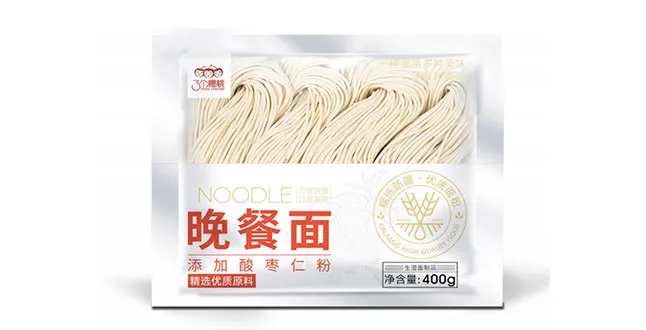chinese hand made noodles
The Art of Chinese Hand-Made Noodles
Chinese hand-made noodles, or la mian (), represent a timeless culinary tradition that embodies the rich heritage of Chinese cuisine. With origins that can be traced back over 4,000 years, these noodles are much more than just a staple food; they are a symbol of skill, culture, and communal spirit.
The process of making hand-made noodles begins with a simple mixture of flour and water, but as any seasoned chef will tell you, the magic lies in the technique. The dough is kneaded meticulously to develop the gluten, a vital component that gives the noodles their signature chewy texture. This kneading process is not merely a task; it is often viewed as an art form, requiring a deep understanding of the ingredients and the physicality of the dough.
The Art of Chinese Hand-Made Noodles
The unique characteristics of hand-made noodles are what set them apart from their machine-produced counterparts. Hand-made noodles tend to have a firmer and more elastic bite, which allows them to hold sauces and broth exceptionally well. This quality makes them ideal for various dishes, from savory stir-fries to steaming bowls of noodle soup. Common accompaniments include rich broth, tender meats, and vibrant vegetables, creating a well-balanced meal that delights the senses.
chinese hand made noodles

Different regions in China feature variations of hand-made noodles, each with unique ingredients and preparations. For instance, in Lanzhou, the famed Lanzhou beef noodle soup showcases a particular style of noodles that is both chewy and soft, served in a clear, aromatic broth with slices of tender braised beef and garnished with fresh herbs. In contrast, the knife-cut noodles, known as dao xiao mian (), from Shanxi province are made by shaving flat blocks of dough into the boiling water, creating thick and hearty noodles that pair perfectly with rich sauces.
Cooking hand-made noodles is an experience in itself. They may require slight adjustments in cooking time compared to machine-made noodles due to their varying thickness and density. However, this challenge is what makes the final dish all the more rewarding. When done right, the result is a bowl of noodles that embodies the union of heart and soul, history and innovation.
The rising popularity of these hand-made noodles is a testament to the renewed interest in traditional cooking methods and the appreciation for artisanal food. Many restaurants and culinary schools are now offering classes focused on the techniques of noodle-making, encouraging a new generation of chefs to explore this ancient craft. Furthermore, hand-made noodles also reflect trends in sustainable eating, as they can be produced locally, with fresh ingredients, providing a direct connection between the chef and the consumer.
Enjoying a bowl of Chinese hand-made noodles is not just a culinary experience; it is a rich, communal event steeped in culture and tradition. Whether enjoyed in the heart of a bustling street market or served in a quiet family kitchen, these noodles tell a story of generations past and present. They symbolize the dedication to craft and the celebration of simplicity, bringing people together over shared meals and cherished memories.
Ultimately, Chinese hand-made noodles are more than just food; they are a celebration of life and culture, inviting us to slow down, savor, and appreciate the artistry behind every strand. In an increasingly fast-paced world, these noodles remind us of the importance of patience and craftsmanship in cooking, making them a timeless favorite that will continue to thrive for years to come.
-
Low GI70 Soba: Delicious & Blood Sugar Smart NoodlesNewsAug.30,2025
-
Low GI70 Soba: Delicious, Healthy & Blood Sugar FriendlyNewsAug.29,2025
-
Authentic Fried Sauce Noodles: Savory, Satisfying, & Easy!NewsAug.28,2025
-
Wholesale Ramen Noodles SuppliersNewsAug.27,2025
-
Organic Soba NoodlesNewsAug.27,2025
-
Organic Ramen Noodles BulkNewsAug.27,2025
-
Improving Foodservice: A Wholesale Buyer’s Guide to Fresh PastaNewsAug.27,2025
Browse qua the following product new the we







